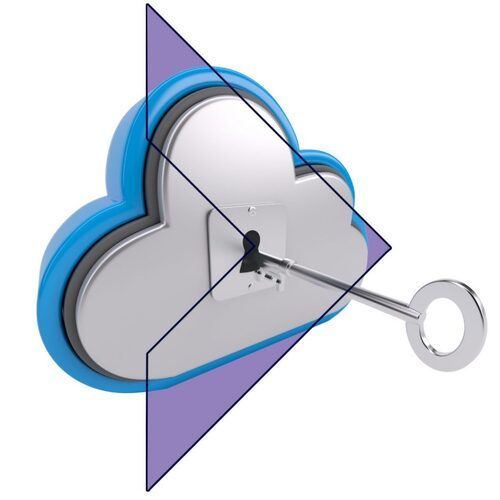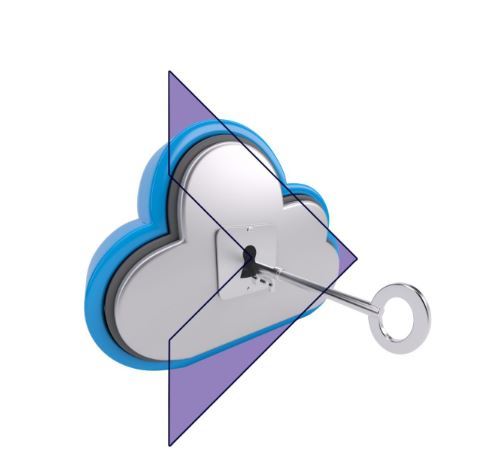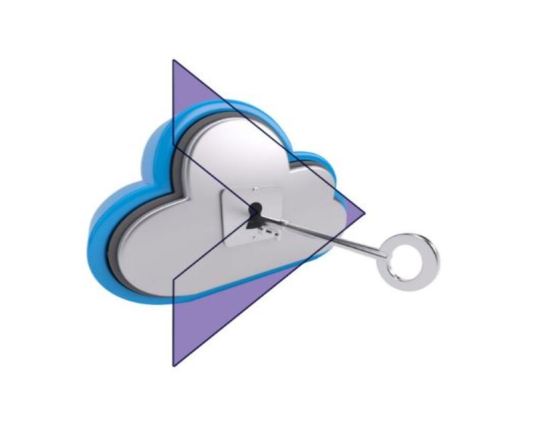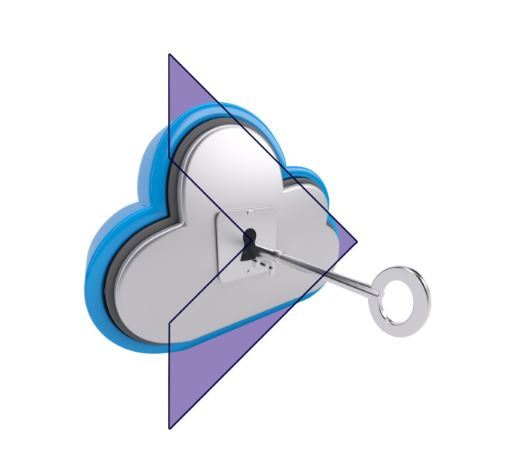#SAP Cloud IAG Integration
Explore tagged Tumblr posts
Text
SAP IAG for Enhanced Access Governance - ToggleNow
Understanding SAP Identity Access Governance (IAG) SAP IAG serves as a comprehensive framework within the SAP ecosystem, designed to manage user access, control risks, and ensure compliance with regulatory standards. Its primary focus lies in governing user access across various SAP applications that are hosted on-premise and cloud along with other non-sap systems such as Azure ID, and platforms.
Access Analysis Service Similar to SAP GRC, SAP IAG also has powerful capabilities to assess and mitigate access risks associated with user permissions. It conducts thorough analysis, identifying potential risks and vulnerabilities within the access structure. A clear definition of risks are displayed for each of the users enabling the Business Owners to take better decisions on managing the risks for each of the user.
Privileged Access Management (PAM) Service PAM Service is similar to GRC Access Control Emergency Access Management aka Firefighter, a specialized solution designed to manage critical access by controlling, monitoring, and securing the SAP systems from unauthorized changes using privileged accounts. It focuses on a more controlled assignment and management of accesses which has business impact. PAM ensure compliance with regulatory standards, thereby fortifying the overall security posture of an enterprise.

Role Designer Service Role Designer service in SAP Identity Access Governance (IAG) is a pivotal tool facilitating the creation and management of user roles within an organization’s access governance framework. It enables administrators to design, customize, and maintain role structures, aligning access with specific job functions or departments. Leveraging Role Designer, businesses can streamline access provisioning by defining business roles, assigning parameters.
Access Request Service The Access Request service feature enables users to request access rights based on predefined roles for various applications integrated to SAP IAG. It streamlines the process, ensuring quick and accurate provisioning while maintaining control. Access Request supports pre-defined workflows and can provision to various on-premise, and cloud applications such as SAP BTP, SAP SAC etc.
Access Certification Periodic access reviews are crucial for compliance. SAP IAG automates access certification processes, allowing designated individuals to review and confirm user access rights periodically. How Access Governance can be enhanced with SAP IAG? Streamlined Access Requests and Approvals
SAP IAG simplifies the access request process by providing a user-friendly interface. Users can easily request specific access rights aligned with their job responsibilities. These requests are then routed through customizable approval workflows, ensuring compliance with defined policies before granting access.
Risk Mitigation through Access Analysis
With its robust risk analysis capabilities, SAP IAG identifies and evaluates potential risks associated with user access. It conducts in-depth assessments, highlighting access combinations that might pose security threats or regulatory non-compliance. This proactive approach enables organizations to mitigate risks effectively. SAP IAG offers refinement options such as Simple Refinement, and Advanced Refinement in addition to the regular Mitigation options.
Further, the SAP IAG Ruleset is delivered with risks related to APO, BASIS, HR, R3, SRM, S4HANA On-premise, S4HANA Cloud, ARIBA, SuccessFactors, Fieldglass, and IBP. For more details on the supported systems, refer to SAP Note – 2782388 – IAG – How to load default standard ruleset?
Automated Access Reviews and Certifications
Manual access reviews are time-consuming and prone to errors. SAP IAG automates these processes, scheduling periodic access reviews and certifications. This automation ensures that user access remains aligned with current job roles and business needs, reducing the risk of unauthorized access.
Role-Based Access Control (RBAC)
SAP IAG facilitates Role-Based Access Control, a method of managing access based on job roles, referred to as Business Roles in IAG. It streamlines access provisioning by assigning roles that are pre-analyzed, and all the relevant mapping is done. This approach simplifies access management while reducing the risk of excessive access rights.
How difference SAP IAG is compared to SAP GRC Access Control? Great Question! Despite sharing similar functionalities, SAP IAG and SAP GRC Access Control possess unique capabilities, advantages, and drawbacks. Comparing them is akin to comparing apples and oranges solely based on their commonality as fruits or similar features. Just like distinct fruits with their individual properties, each of these solutions has its own set of characteristics and benefits.
Read more : https://togglenow.com/blog/sap-iag-for-enhanced-access-governance/
#sap sod analysis#sap user management automation#GRC Access Control#SAP Cloud Identity Services#SAP IAG Implementation#Cloud IAG#SAP Cloud IAG#SAP IAG Access Analysis#SAP IAG Integration with GRC#SAP Cloud IAG Integration#SAP IAG- Analytics Cloud Integration#sap cloud identity management#sap cloud based solutions
0 notes
Text
Navigating the Future of GRC and Access Governance in SAP Ecosystems
A New Era of Security and Access Governance

Governance, Risk, and Compliance (GRC) and Access Governance are undergoing major changes due to digital growth and stricter regulations. As organizations connect more data and systems, they’re shifting from isolated security practices to proactive, integrated compliance processes. Raghu Boddu, founder of ToggleNow and a seasoned leader in SAP GRC, has observed these shifts closely.
“Fifteen years ago, most companies didn’t treat security as a separate function—it was part of Basis administration,” Raghu explains. “Today, security is essential, and organizations know it’s crucial for protecting data, compliance, and brand reputation.”
New Market Realities and Demand for Integrated GRC Solutions
SAP has long been at the forefront of GRC, offering tools to help both finance and IT teams tackle compliance challenges. Solutions like SAP Access Control and Identity Access Governance (IAG) provide the flexibility to manage today’s security needs while adapting to future ones. As businesses adopt hybrid and multi-cloud systems, managing security across different platforms has become more complex. This is where SAP’s Business Technology Platform (BTP) shines. BTP connects SAP and non-SAP applications seamlessly, creating a secure, compliant ecosystem. “BTP and SAP Identity Services have changed the game for multi-cloud environments,” says Raghu. “Today, integration is nearly seamless thanks to SAP’s open APIs and connectors. This has allowed companies to manage security across hybrid systems without needing extensive customization.”
Regional Insights: GRC Maturity and Market Growth
The GRC and Identity Access Management (IAM) markets vary widely across regions, shaped by local regulations and market maturity. In the U.S., SoX compliance has driven strict GRC standards for years. Many American companies have developed sophisticated GRC processes, particularly around data security and financial compliance. Meanwhile, regions like India are rapidly catching up.
“The growth potential in India is huge,” Raghu shares. “Over the last five years, Indian businesses have started treating GRC as essential, not optional.”
In both the U.S. and other markets, companies are increasingly adopting automation and hybrid identity solutions to handle complex regulations. This shift reflects a global move toward integrated compliance, with GRC becoming a core business priority rather than a “tick-the-box” function. As Raghu adds, “It’s inspiring to see GRC prioritized as part of strategy, not just an audit requirement.”
The Future of GRC: AI-Driven Compliance and Embedded Solutions
a) AI and Automation in GRC
Automation and AI are quickly transforming GRC from a reactive function into a proactive one, identifying risks before they become problems. With AI-driven GRC, systems can automatically analyze data to help companies detect potential compliance issues and manage risk more intelligently. SAP’s GRC tools with AI simplify compliance processes and improve decision-making, allowing teams to focus on strategic priorities.
Raghu highlights the potential of AI in GRC: “AI has incredible potential in the GRC space. It’s about giving businesses more power to manage risk with accuracy, while reducing manual efforts and errors.”
b) Embedding Compliance into Daily Processes
Looking forward, GRC will be embedded directly within applications and workflows, constantly monitoring for risks and responding to threats as they arise. Raghu envisions this future: “In the next five years, GRC as a standalone system may fade. Instead, it will be part of daily workflows, where applications flag risks and suggest controls in real time. AI will automate many compliance tasks, cutting down manual efforts.”
He adds, “Imagine GRC as a tool that proactively flags a potential access issue based on historical patterns—like a security recommendation engine. This proactive risk management approach is where AI will make the most impact.”
About Raghu Boddu and ToggleNow: Innovating in GRC and SAP Integration
Raghu Boddu, founder of ToggleNow, has over two decades of experience in SAP GRC and has witnessed the industry’s evolution firsthand. He started ToggleNow to address complex GRC challenges, helping companies make compliance efficient and accessible. With solutions that streamline risk management and improve security, ToggleNow has become a trusted partner for organizations operating in SAP environments.
Raghu is also a published author, with books such as SAP Access Control 12.0 Comprehensive Guide, SAP Process Control 12.0 Comprehensive Guide, and SAP Cloud IAG eBite. The books offer practical insights into implementing SAP GRC solutions effectively. His books emphasize not only the technical aspects but also strategic best practices, making them valuable resources for GRC professionals.
ToggleNow has been particularly impactful in areas like SAP integration and GRC automation, where Raghu’s team develops innovative tools that simplify complex processes. “At ToggleNow, our focus is to help clients build a compliant, adaptable GRC framework that meets today’s demands while preparing for tomorrow’s,” says Raghu.
Conclusion: Building a Future-Ready GRC Strategy
For companies looking ahead, the time to adapt is now. As GRC evolves, adopting flexible, AI-driven, and integrated solutions is key. Businesses should prepare for a future where compliance is embedded in every workflow and AI-driven insights make risk management smarter.
“The future of GRC is all about integration, intelligence, and ease,” Raghu emphasizes. “Companies investing in these areas today will be well-prepared to navigate tomorrow’s challenges.”
In an increasingly interconnected world, the ability to proactively manage risk and compliance is more than a regulatory need—it’s a strategic advantage. By embracing AI, automation, and integration, companies can transform GRC from a support function to a driver of resilience and growth.
Read More: https://togglenow.com/blog/navigating-the-future-of-grc-and-access-governance-in-sap-ecosystems/
#SAPSODanalyzer#SAPSODanalysistool#SAPSODanalysis#SAPGRCandsecurity#SAPs4security#SAPgovernanceriskandcompliance
0 notes
Text
Enhanced Governance & Compliance with SAP Cloud IAG | Toggle Now

SAP Cloud Identity and Access Governance (IAG) stands as a transformative solution for enterprises, fortifying access control mechanisms across cloud environments. By implementing SAP Cloud IAG, organizations enhance security measures, streamline governance, and ensure compliance with regulations and internal policies. This comprehensive solution centralizes identity management, automates user lifecycle processes, and employs adaptive access strategies for real-time risk mitigation. It seamlessly integrates with diverse cloud platforms, optimizes user experience, and scales efficiently to meet evolving business needs. SAP Cloud IAG not only reduces operational costs through automation but also future-proofs identity governance strategies, ensuring enterprises remain resilient in the face of technological advancements and evolving security threats.
Read More: https://togglenow.com/services/sap-cloud-iag-services/
1 note
·
View note
Text
8 steps that you should consider while selecting a Segregation of Duties solutions to meet various compliance requirements.

Step 1: Assess Your Compliance Requirements
The first crucial step is to assess your organization’s compliance requirements. For example, in the United States, publicly traded companies must comply with the Sarbanes-Oxley Act (SOX), which requires the implementation of strong internal controls, including segregation of duties. Other compliance mandates, such as the Payment Card Industry Data Security Standard (PCI DSS), the Health Insurance Portability and Accountability Act (HIPAA), and the General Data Protection Regulation (GDPR), may also apply depending on your industry and geographical location. Understanding these requirements will help you identify the specific segregation of duties guidelines you need to follow.
Step 2: Identify Key Risks and Control Objectives
Next, identify the key risks associated with your business processes. For example, in the finance department, a key risk could be the possibility of an employee initiating and approving financial transactions without adequate oversight. Determine the control objectives that need to be addressed through effective segregation of duties, such as preventing unauthorized access, ensuring data integrity, and minimizing the risk of conflicts of interest. This step will enable you to prioritize your requirements and focus on the critical areas that require the strongest controls.
Note: While many Segregation of Duties solutions provide ready-to-use rulebooks with standard conflicts, it is important to consider the level of flexibility offered for customizations. Each organization may have unique requirements and specific conflicts that need to be addressed. Therefore, it is crucial to validate the extent to which the SoD solution allows for customization to accommodate your organization’s specific needs.
Step 3: Evaluate Your Existing Processes and Systems
Evaluate your current processes and systems to identify any existing gaps or limitations in segregation of duties. For example, not all the SoD solutions support IS-Utilities Rulesets. Engage your internal/external audit firm to assess the effectiveness of the solution and validate the effectiveness of the solution with your existing process. Further, understand how roles, responsibilities, and access permissions are currently managed within your organization. This evaluation will provide insights into the specific areas where an SoD solution can bring significant value.
Step 4: Research and Shortlist SoD Solutions
Now that you have a clear understanding of your compliance requirements and existing gaps, it’s time to research and shortlist potential SoD solutions. Look for solutions that offer robust features such as role-based access control, mitigation control implementation, monitoring and reporting capabilities, integration with your existing systems, customizations, costs etc., For example, a Risk analysis solution that is available on the cloud may not allow customizations or add various additional costs. Few other questions to ask are:
Can the solution evaluate risks at the Fiori apps level?
Is the solution scalable to S/4 HANA systems?
Does the solution allow for setting up alerts for key risk areas?
Does the solution support multiple rulesets?
Can the solution handle approval workflows for key master data changes, such as Risk and Mitigation Control?
Does the solution provide robust change logs to ensure data integrity?
Lastly, is the solution provider GDPR compliant if the data is hosted in their system? Keep in mind that SoD analysis may involve accessing Personally Identifiable Information (PII) data.
Consider other factors such as scalability, flexibility, ease of implementation, and user-friendliness. Some popular SoD solutions in the market include SAP GRC (Governance, Risk, and Compliance) Access Risk Analysis, SAP Cloud IAG, RSA Archer, and ToggleNow’s Verity.
ToggleNow’s Verity solution offers a seamless implementation process, specifically designed for ECC/S4 systems, without the requirement for additional infrastructure or software licenses. Built on ABAP, this user-friendly solution can be readily implemented within a short timeframe of 7-10 days. One of the notable advantages of Verity is its affordability, with significantly low implementation and support costs. By choosing Verity, organizations can swiftly integrate robust Segregation of Duties controls into their existing systems while keeping implementation and maintenance expenses at a minimum.
Step 5: Request Demonstrations
Request demonstrations from the shortlisted SoD solution providers. This will allow you to evaluate their functionalities in a real-world setting and assess how well they meet your specific requirements. During this phase, involve key stakeholders, such as compliance officers, IT personnel, and end-users, to gather their feedback and perspectives. Ensure that the solutions address the specific compliance mandates and audit requirements applicable to your organization.
Our experts are delighted to answer your questions about Verity solution, provide detailed insights, and guide you through the evaluation process of Verity. Don’t miss this opportunity to explore how Verity can enhance your organization’s internal controls and ensure compliance with ease. Book your slot.
Step 6: Perform Cost-Benefit Analysis
Perform a comprehensive cost-benefit analysis of the shortlisted solutions. Consider the upfront implementation costs, ongoing maintenance and support fees, training requirements, and the potential return on investment. Look beyond the immediate financial aspects and consider the long-term benefits, such as improved compliance, reduced risk exposure, and enhanced operational efficiency. Factor in the potential savings from avoiding fines, penalties, and reputational damage resulting from non-compliance.
An additional and crucial point to consider is the availability and size of the support team. While there are numerous providers in the market offering SoD solutions, it is essential to validate whether they have adequate support capabilities. Some providers may have limited teams, often consisting of only 1 or 2 members, which can hinder their ability to provide timely and efficient support. It is crucial to understand the size of the support team to ensure that your investment in the SoD solution is well-supported, avoiding any potential waste of resources/investments.
Step 7: Seek References and Reviews
Before making a final decision, seek references and reviews from existing clients of the shortlisted SoD solution providers. Reach out to organizations similar to yours in size and industry to understand their experiences with the solution. This step will provide valuable insights into the solution’s performance, reliability, customer support, and overall satisfaction. Consider engaging with industry experts, consultants, or audit firms for their recommendations and expertise in SoD solutions.
Step 8: Make an Informed Decision
After completing the previous steps, you are now equipped to make an informed decision. Evaluate all the gathered information, feedback, and insights to select the SOD solution that best aligns with your compliance requirements, addresses your key risks, and fits within your budget and operational constraints. Ensure that the solution meets the specific audit requirements applicable to your organization, such as the need for detailed audit logs, automated reporting, and periodic attestation capabilities.
1 note
·
View note
Text
0 notes
Text
The Case For Becoming A Youtube Marketing Manager This Year
youtube marketing manager Image source: rawpixel / Pixabay I was reading the latest news about Youtube marketing and I found an article titled: What 5 years of the CMO brand has taught us about marketing leadership, it relates to being a youtube marketing manager, and I wondered you disagree with me that the author hit the nail on the head! After reading what the author wrote, see why I agree...
Youtube Marketing Manager
Five years ago in May, IDG tasked me with launching CMO as a brand in Australia. It was a decision driven by two factors: One, the exponential growth of technology in the marketing sphere; and two, the rising role of the marketer as an executive leader of influence. When we started, it was clear marketers were already in the midst of significant change and experiencing a shake-up – in opportunity, in complexity and in executive expectation. Digital disruption, connected customers, the rise of social media and an explosion of channels with which to interact and communicate with consumers all challenged marketers to lift and pivot their game if they were to successfully help their organisations achieve competitive advantage and sustainable growth. Succeeding in such an environment has required a transformation of everything – from skillsets to platforms and connected systems, a shift from campaign mentality to customer engagement-led approach, and fostering cross-functional collaboration and harmony. So in five years, what are some of the trends we’ve seen and things we’ve learnt about being a CMO?
1. Creation of the Marketing Cloud
We’ve all seen Scott Brinker’s marketing technology lumascape and born witness to the explosion of software applications and platforms coming into the marketing and advertising sphere. There are 6829 solutions listed on that lumascape in 2018, up from 150 recorded in 2011. In fact, when we first started CMO, the martech landscape was often called the wild west of technology. But as with any technology hype cycle – and I think CRM, enterprise databases and ERP as classic examples – these technology offerings quickly matured into comprehensive stacks. Largely through acquisition, we’ve seen a rapid evolution of the Marketing Cloud and rise of enterprise-grade vendors providing a suite of integrated ‘stacks’ of software capability. The Forrester Wave: Enterprise Marketing Software Suite Q1, 2018, noted seven of the most comprehensive vendor EMSS platforms now available as part of a 40-criteria evaluation of offerings currently in market. The platforms all had to provide customer data management and analytics, campaign management, advertising and interaction orchestration and delivery, as well as some marketing resource, content and performance measurement capabilities. The brands are now familiar to many: Adobe, Salesforce, IBM, SAP Hybris, Oracle, SAS and Marketo. What’s included in these marketing clouds is still a moving feast. In more recent acquisitions, vendors have been extending their reach across into adtech components as they look to bring direct (known customer) marketing together with media spend (and the unknown). Good examples include Salesforce’s acquisition of DMP player, Krux, and Adobe’s of programmatic video technology, TubeMogul. Over the past year, these clouds have been getting somewhat of a rebrand and repositioning too, with ‘experience’ in some cases superseding ‘marketing’. Integration between marketing clouds and other business platforms has also become an imperative. And they’ve continued to gain new capabilities. As it becomes clear martech is only as good as the data you access and use, and the customer understanding you respond to, we’re also seeing new categories emerge such as account-based marketing, customer data platforms and sales automation and enablement. Arguably the biggest disruption to date, however, is the introduction of AI/machine learning capabilities. These are being injected into the underlying framework of marketing clouds in order to further automate and support brands in personalising and utilising data for customer gain. And they’re powering features such as image recognition and attrition models through to chatbots. We’re only at the very early stages of this intelligence. As tech capability has grown, so too has the marketer’s tech budget. According to our new State of the CMO 2018 (see page 26), more than one-third of marketers control upwards of 90 per cent of marketing and customer technology dollars in their organisations – that’s up 14 per cent year-on-year. We also found 31 per cent have sole purchasing power this year, a far cry from the 8 per cent we recorded when we first asked this question in 2014. And more than half make joint purchase decisions with IT or digital colleagues. Only 4 per cent don’t have any influence.
2. Rise of the chief customer officer
Funnily enough, when we launched CMO, we started with the assumption marketers owned the customer and all engagement. Turns out, we were tapping into the aspiration and need, not necessarily the reality. Marketers were all over acquisition, but didn’t often have jurisdiction for end-to-end customer experience. This I’m happy to say, is changing, although the extent to which marketers control all the levers across the lifecycle differs widely. But certainly they’re gaining a lot more of the responsibility and remit. Digital has triggered a complete shift in the way organisations deliver utility, value, efficiency, simplicity and emotional connections with customers. And much like digital disruption, customer-led transformation requires a leader to bring cross-functional, disparate teams into one unified whole, all following the same customer-fuelled vision. Hence the rise of this new job, the chief customer experience officer. What is meant by ‘chief customer officer’ depends on who you talk to. In some instances, the CCO is an extended marketing leadership position, while in others, it reflects ownership of the end-to-end customer lifecycle, including product to digital, data, strategy and more. At Mercer, for example, chief customer officer, Cambell Holt, oversees marketing, customer experience, commercial partnerships, customer platforms, digital, insights and analytics and strategy. Last year, Qantas also appointed its group executive of brand, marketing and corporate affairs, Olivia Wirth, its first chief customer officer with a remit that now extends to customer and digital strategy. Taking a different tack, NAB introduced three chief customer officers nearly two years ago to sit at the top of each of its three business units. At IAG, chief customer officer, Julie Batch, sits across the Customer Labs division covering customer experience, digital delivery, data, product, pricing, marketing innovation and new business incubation. One of her direct reports is CMO, Brent Smart. According to this year’s State of the CMO, half of respondents took on customer experience as a functional report in the last 12 months, and 62 per cent have customer experience as a function reporting into marketing today. When we asked who ‘owned’ CX, top was CMO (33 per cent), followed by chief customer officer (20 per cent). Notably, however, 15 per cent said ‘no one’ owned customer experience. A number reported joint CX ownership, typically across marketing and operational teams. But it also depends on how the CMO is perceived in the business. It’s CMOs reporting directly to the CEO, for instance, that tend to own the customer experience function in greater numbers. With all this shape shifting around both c-suite make-up and the remit of the CMO, it’s unclear how prevalent ‘chief customer officer’ will be in the longer term. But expect a lot more shuffling in the c-suite and the CMO remit in the coming few years. If you want to read more go here
So, you've read it, do you agree that when it concerns author being that CMO has taught us alot about marketing and leadership? I feel that it does because you don't see those type of results without do something correct! Do you want to become a better youtube marketing manager even more after reading the above article? If you have a moment... let me know what are your feelings about it? Please leave a remark in the comments area... P.S. Remember to Tweet this post.
http://marketinginsidr.com/youtube-marketing-manager/
#thecaseforbecomingayoutubemarketingmanagerthisyear#what5yearsofthecmobrandhastaughtusaboutmarketingleadership#youtubemarketingmanager#marketingnews#youtubemarketing
0 notes
Text
SAP Cloud IAG | SAP BTP | SAP IAG | Identity & Access Governance | IAG Bridge | ToggleNow

SAP Cloud Identity and Access Governance (IAG) stands as a transformative solution for enterprises, fortifying access control mechanisms across cloud environments. By implementing SAP Cloud IAG, organizations enhance security measures, streamline governance, and ensure compliance with regulations and internal policies. This comprehensive solution centralizes identity management, automates user lifecycle processes, and employs adaptive access strategies for real-time risk mitigation. It seamlessly integrates with diverse cloud platforms, optimizes user experience, and scales efficiently to meet evolving business needs. SAP Cloud IAG not only reduces operational costs through automation but also future-proofs identity governance strategies, ensuring enterprises remain resilient in the face of technological advancements and evolving security threats.
Read more: https://togglenow.com/services/sap-cloud-iag-services/
#SAP IAG#SAP Cloud IAG#sap sod analysis#sap user management automation#GRC Access Control#sap cloud platform#cloud platform integration#sap cloud data integration#sap hana solutions#sap cloud management#sap cloud based solutions#sap cloud identity management
0 notes
Text
Case study on SAP Licensing Optimization - ToggleNow

Today’s business environment requires the efficient management of SAP licensing, though it can be challenging. This problem can be resolved by Optimus for SAP Applications, developed by ToggleNow, by offering tools to assist organizations in navigating SAP licensing complexities.
Optimus eliminates the visibility gap in license management, thus reducing audit costs and ensuring compliance with SAP’s agreements. Therefore, through leveraging Optimus, organizations remain compliant, reduce audit costs while at the same time combating risks related to unnecessary expenses on licenses.
Optimus enables businesses to optimize their SAP investments through tailored optimization strategies and continuous support, enhancing efficiency and maximizing value.
Go for Optimus for SAP Applications and open up new chapters of your technology journey as an organization. Get in touch with ToggleNow if you need more information.
Read more: https://togglenow.com/case-studies/case-study-on-sap-licensing-optimization/
#SAP GRC AC#GRC Audit#SAP GRC Tool#grc in sap#sap grc#grc sap#sap grc integration#sap grc implementation#grc access control#sap grc access control#sap audit management#sap sod analysis#SAP Cloud IAG#sap audit services#sap risk management#SAP Risk management#sap user management automation#Protect Sap with MFA#SAP ETD#GRC Access Control#SAP 2FA
0 notes
Text
How we helped businesses succeed by providing them with innovative and effective solutions to manage risks
In today’s business landscape, managing SAP systems can be challenging. Many companies struggle with Segregation of Duties (SoD) conflicts and irrelevant transaction codes, making audits cumbersome and increasing the risk of fraud.

Our client, a chemical company with a sizable user base, faced similar issues. SoD conflicts were rampant, and irrelevant transaction codes abounded, complicating their SAP management.
ToggleNow provided a solution: their SAP-certified Verity application, paired with industry-standard risk rule sets. By restructuring roles and implementing controls, they reduced SoD conflicts by 42% and minimized role changes.
ToggleNow’s straightforward approach transformed our client’s SAP management, simplifying audits and mitigating risks effectively.
Read more: https://togglenow.com/case-studies/how-we-helped-businesses-succeed-by-providing-them-with-innovative-and-effective-solutions-to-manage-risks/
#SAP GRC AC#GRC Audit#SAP GRC Tool#grc in sap#sap grc#grc sap#sap grc integration#sap grc implementation#grc access control#sap grc access control#sap audit management#sap sod analysis#SAP Cloud IAG#sap audit services#sap risk management#SAP Risk management#sap user management automation#Protect Sap with MFA#SAP ETD#GRC Access Control#SAP 2FA
0 notes
Text
A case study on analyzing Custom Transaction codes and updating the Risk Ruleset
With ToggleNow's automated approach, the client possess greater insight into the risks associated with custom transaction codes and have updated the risk ruleset

In today’s dynamic business landscape, many SAP customers leverage custom transaction codes to streamline operations and enhance efficiency. However, with customization comes responsibility, as it introduces risks such as segregation of duties violations and unauthorized access. This case study sheds light on our collaborative journey with a leading luggage manufacturer, addressing the challenges posed by custom transaction codes in their SAP environment. Through meticulous analysis and remediation, we not only mitigated existing vulnerabilities but also fortified their SAP ecosystem, ensuring operational resilience and regulatory compliance.
Read more: https://togglenow.com/case-studies/case-study-on-analyzing-custom-transaction-codes-and-updating-the-risk-ruleset/
#SAP GRC AC#GRC Audit#SAP GRC Tool#grc in sap#sap grc#grc sap#sap grc integration#sap grc implementation#grc access control#sap grc access control#sap audit management#sap sod analysis#SAP Cloud IAG#sap audit services#sap risk management#SAP Risk management#sap user management automation#Protect Sap with MFA#SAP ETD#GRC Access Control#SAP 2FA
0 notes
Text
3 benefits of customizing SAP GRC Application - ToggleNow
GRC software is a set of tools designed to integrate compliance into daily business processes and help mitigate risk as the organization grows. Processes such as user provisioning, role management, emergency access management, periodic risk assessments, control management can be easily implemented and managed effectively with the SAP GRC software. GRC software automates routine audit and compliance processes, reduces the risk of fraud in ERP systems, and reduces costs.
Benefits of Customizing GRC Application In a recent study by ToggleNow, it was evident that more than half of the businesses surveyed had only used 2 or fewer components of GRC Access Control, i.e., Access Risk Analysis and Emergency Access Management. Further, majority of them are utilizing just the out-the-box capabilities. GRC can add various benefits when it is functioning correctly and customized to fit in your business. Customizing the system provides flexibility in how it’s used. This allows both security managers and the auditors to set up their systems according to organization unique preferences.
Here are some reasons that may be relevant to customize your SAP GRC application:
Reason # 1 – Customizing Ruleset will ensure you are evaluating with the right risk matrix
SAP’s default ruleset is a good starting point but is generalized for all industries and chances are that all of them are not applicable to your organization’s needs. Every access risk requires a thorough check to ensure it is relevant to your business. By removing risks that don’t apply to you, and creating the ones that are relevant to you will reduce the effort and costs involved in managing them.

Below are the activities that you must be considered:
Identify the relevancy of the risks in the ruleset Identify the risks associated with custom (Z or Y) transaction codes. Update the ruleset with the custom risks Identify false positives Define Org Rules & Supplementary rules Reason # 2 – Better Control with customized Workflows
MSMP is a workflow engine that allows you to customize the approval process based on your business requirements and accommodates various business scenarios of a company’s approval and provisioning processes. When it’s coupled with BRF+, default function modules, ABAP classes, it makes it more flexible and robust.

So how does an MSMP workflow work?
When a requester raises a new Access request, it triggers the initiator, which is tied up to a specific approval path. The path will have pre-determined stages that are assigned with necessary approvers and settings built in, which dictates how a request should be handled.
Further, the request could take a detour based on the pre-defined conditions, i.e., a completely new path (Routing rules), or branch off into two distinct paths (fork route).
What additional customization is required?
Even though the standard rules provide a greater flexibility in defining the approval processes, many organizations see a gap and thus use manual processes during the approval process. These additional requirements can be automated with simple to complex customizations. Here are some of the examples:
Provisioning to Non-SAP systems Using BOTs in GRC User Access Review Using ChatBOTs to automate Access Requests Reason # 3 – Eliminate the need of manual activities
Compliance at click of a button is the future. Unfortunately, there are no such ready-to-deploy solutions available that help you to automate the features in SAP GRC application. Activities such as manual report generation, alerting approvers for on-time approvals, and review processes can be automated with the right customizations and implementing automation programs. In our experience, we have seen a decrease of approximately 70% in the manual activities.
A list of automations is available at our Automation Stories section.
Make your SAP GRC more powerful
Additional customizations such as Firefighter Log Reviews, Reporting, Mitigation Control Management and automation of user and SOD review process will transform your SAP GRC system into a next generation application. SAP GRC processes can be automated using RPA tools such as SAP IRPA, Automation Anywhere, UI Path or other BOT based solutions.
Going a Step Further!! Here is how ToggleNow can help in our SAP GRC transformation journey?
Our FourEdge service offering helps organizations to start their digital transformation journey. Our team can help you identify which elements of your business should you focus on first and how we can support in building a more business focused GRC application.
FourEdge has 4 phases; In the first phase, our consultants analyze your GRC application and create a blueprint for streamlining it. They build a solid foundation to get you started on the right foot. In the second phase, they automate the simple processes that can add quick value to the business. In the third phase, various automations using BOTs will be implemented, and in the fourth phase we showcase the right RoI by reducing the tasks to a great extent, and enabling the right reporting capabilities for better management decisions.
Read more: https://togglenow.com/services/sap-grc-services/
#SAP GRC AC#GRC Audit#SAP GRC Tool#grc in sap#sap grc#grc sap#sap grc integration#sap grc implementation#grc access control#sap grc access control#sap audit management#sap sod analysis#SAP Cloud IAG#sap audit services#sap risk management#SAP Risk management#sap user management automation#Protect Sap with MFA#SAP ETD#GRC Access Control#SAP 2FA
0 notes
Text
SAP Cloud IAG | SAP BTP | SAP IAG | Identity & Access Governance | IAG Bridge | ToggleNow
SAP Cloud Identity and Access Governance (IAG) stands as a transformative solution for enterprises, fortifying access control mechanisms across cloud environments. By implementing SAP Cloud IAG, organizations enhance security measures, streamline governance, and ensure compliance with regulations and internal policies.

This comprehensive solution centralizes identity management, automates user lifecycle processes, and employs adaptive access strategies for real-time risk mitigation. It seamlessly integrates with diverse cloud platforms, optimizes user experience, and scales efficiently to meet evolving business needs. SAP Cloud IAG not only reduces operational costs through automation but also future-proofs identity governance strategies, ensuring enterprises remain resilient in the face of technological advancements and evolving security threats.
Read more: https://togglenow.com/services/sap-cloud-iag-services/
#SAP Cloud IAG#sap cloud platform#sap cloud integration#sap cloud platform integration#sap cloud management#sap cloud identity management
0 notes
Text
SAP Enterprise Threat Detection | SAP ETD | Threat Management | ToggleNow
SAP Enterprise Threat Detection (SAP ETD) plays a pivotal role in safeguarding complex SAP environments supporting critical business processes. ToggleNow implemented SAP ETD to heighten visibility and monitoring across organizational SAP landscapes. By centralizing logs and normalizing data sources within the solution’s security knowledge base, SAP ETD effectively identified internal threats from both internal and third-party users involved in non-core activities.

This tool empowered security teams with crucial insights, enabling swift detection of fraud attempts and information leaks within SAP systems. In the vast and intricate realm of SAP landscapes, SAP ETD emerged as a vital asset, offering a proactive approach to tackle cybersecurity challenges, particularly in identifying and addressing security risks that would otherwise be challenging to detect.
Read more: https://togglenow.com/services/sap-entripise-threat-detection/
#sap sod analyzer#sap audit services#sap grc implementation#sap grc audit management#sap grc integration#SAP ETD#SAP Enterprise Threat Detection#SAP Threat#SAP Cloud IAG
0 notes
Text
SAP Cloud IAG | SAP BTP | SAP IAG | Identity & Access Governance | IAG Bridge | ToggleNow
SAP Cloud Identity and Access Governance (IAG) stands as a transformative solution for enterprises, fortifying access control mechanisms across cloud environments. By implementing SAP Cloud IAG, organizations enhance security measures, streamline governance, and ensure compliance with regulations and internal policies.

This comprehensive solution centralizes identity management, automates user lifecycle processes, and employs adaptive access strategies for real-time risk mitigation. It seamlessly integrates with diverse cloud platforms, optimizes user experience, and scales efficiently to meet evolving business needs. SAP Cloud IAG not only reduces operational costs through automation but also future-proofs identity governance strategies, ensuring enterprises remain resilient in the face of technological advancements and evolving security threats.
Read more: https://togglenow.com/services/sap-cloud-iag-services/
0 notes
Text
SAP Cloud IAG | SAP BTP | SAP IAG | Identity & Access Governance | IAG Bridge | ToggleNow
SAP Cloud Identity and Access Governance (IAG) stands as a transformative solution for enterprises, fortifying access control mechanisms across cloud environments. By implementing SAP Cloud IAG, organizations enhance security measures, streamline governance, and ensure compliance with regulations and internal policies.

This comprehensive solution centralizes identity management, automates user lifecycle processes, and employs adaptive access strategies for real-time risk mitigation. It seamlessly integrates with diverse cloud platforms, optimizes user experience, and scales efficiently to meet evolving business needs. SAP Cloud IAG not only reduces operational costs through automation but also future-proofs identity governance strategies, ensuring enterprises remain resilient in the face of technological advancements and evolving security threats.
Read more: https://togglenow.com/services/sap-cloud-iag-services/
0 notes
Text
SAP Cloud IAG | SAP BTP | SAP IAG | Identity & Access Governance | IAG Bridge | ToggleNow
SAP Cloud Identity and Access Governance (IAG) stands as a transformative solution for enterprises, fortifying access control mechanisms across cloud environments. By implementing SAP Cloud IAG, organizations enhance security measures, streamline governance, and ensure compliance with regulations and internal policies.

This comprehensive solution centralizes identity management, automates user lifecycle processes, and employs adaptive access strategies for real-time risk mitigation. It seamlessly integrates with diverse cloud platforms, optimizes user experience, and scales efficiently to meet evolving business needs. SAP Cloud IAG not only reduces operational costs through automation but also future-proofs identity governance strategies, ensuring enterprises remain resilient in the face of technological advancements and evolving security threats.
Read more: https://togglenow.com/services/sap-cloud-iag-services/
#SAP Cloud IAG#sap cloud platform#sap cloud management#sap cloud identity management#cloud platform integration
0 notes